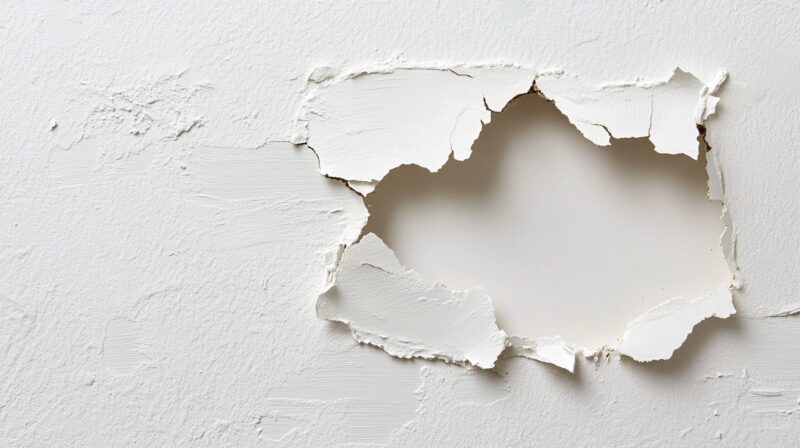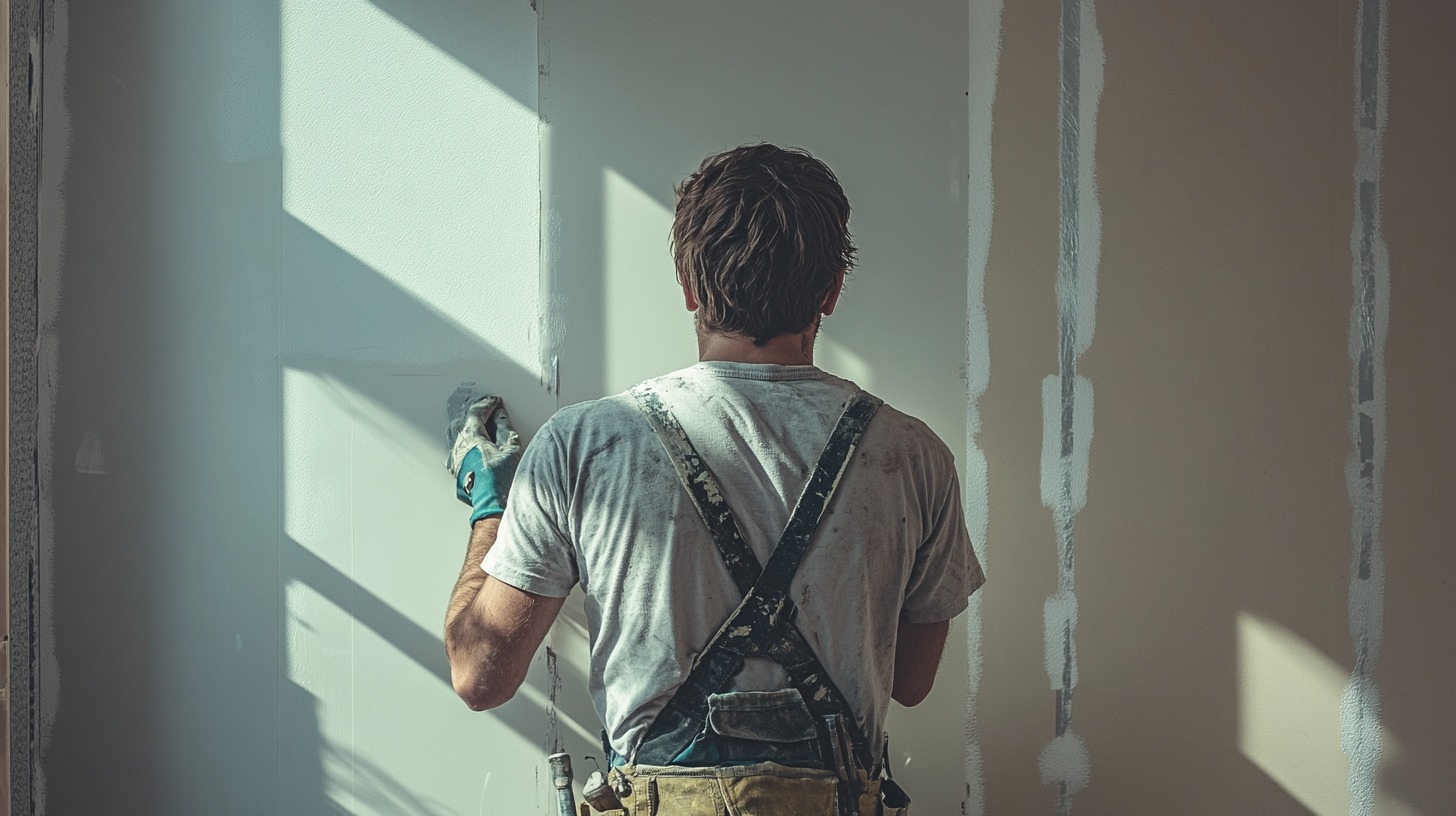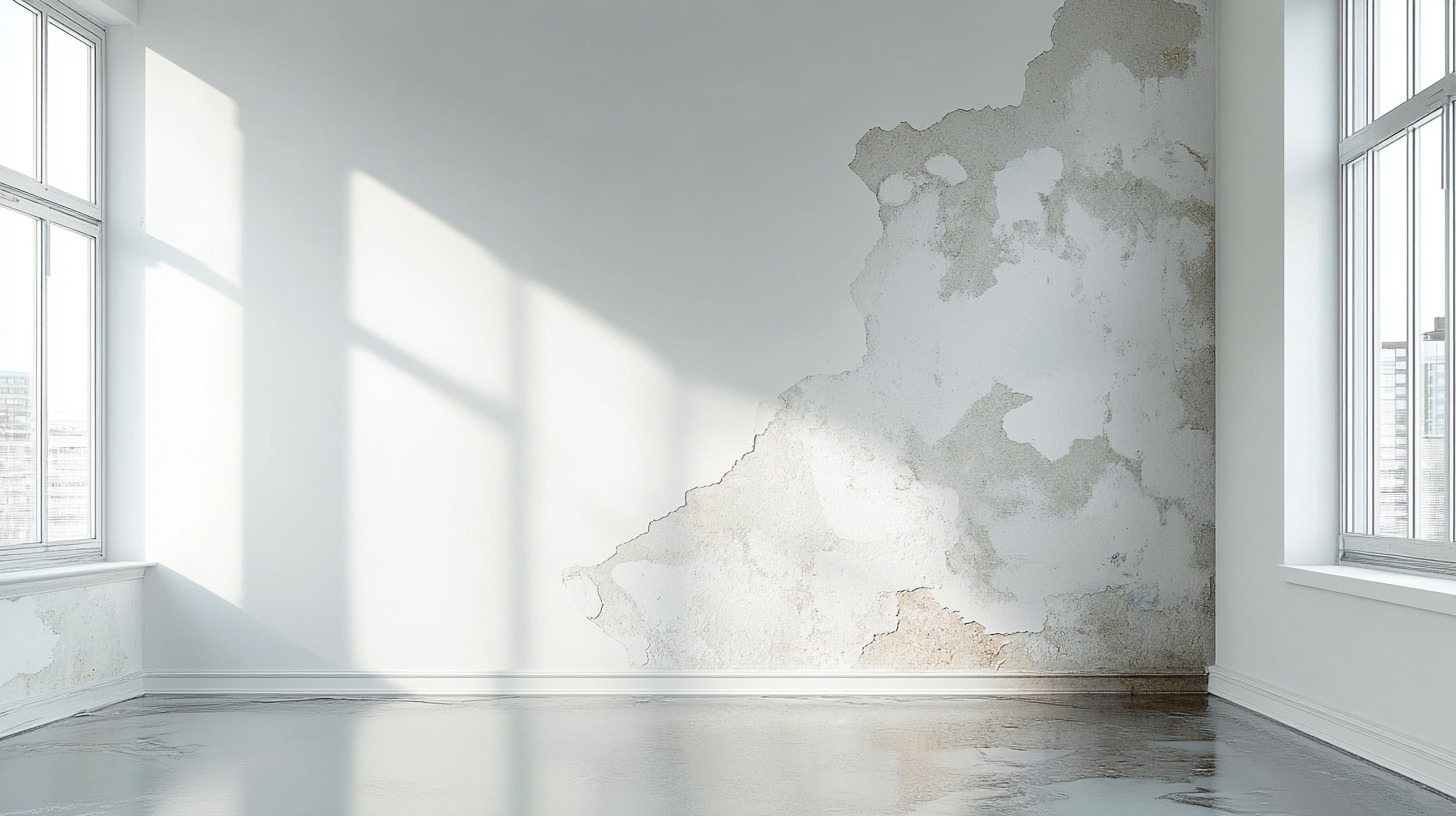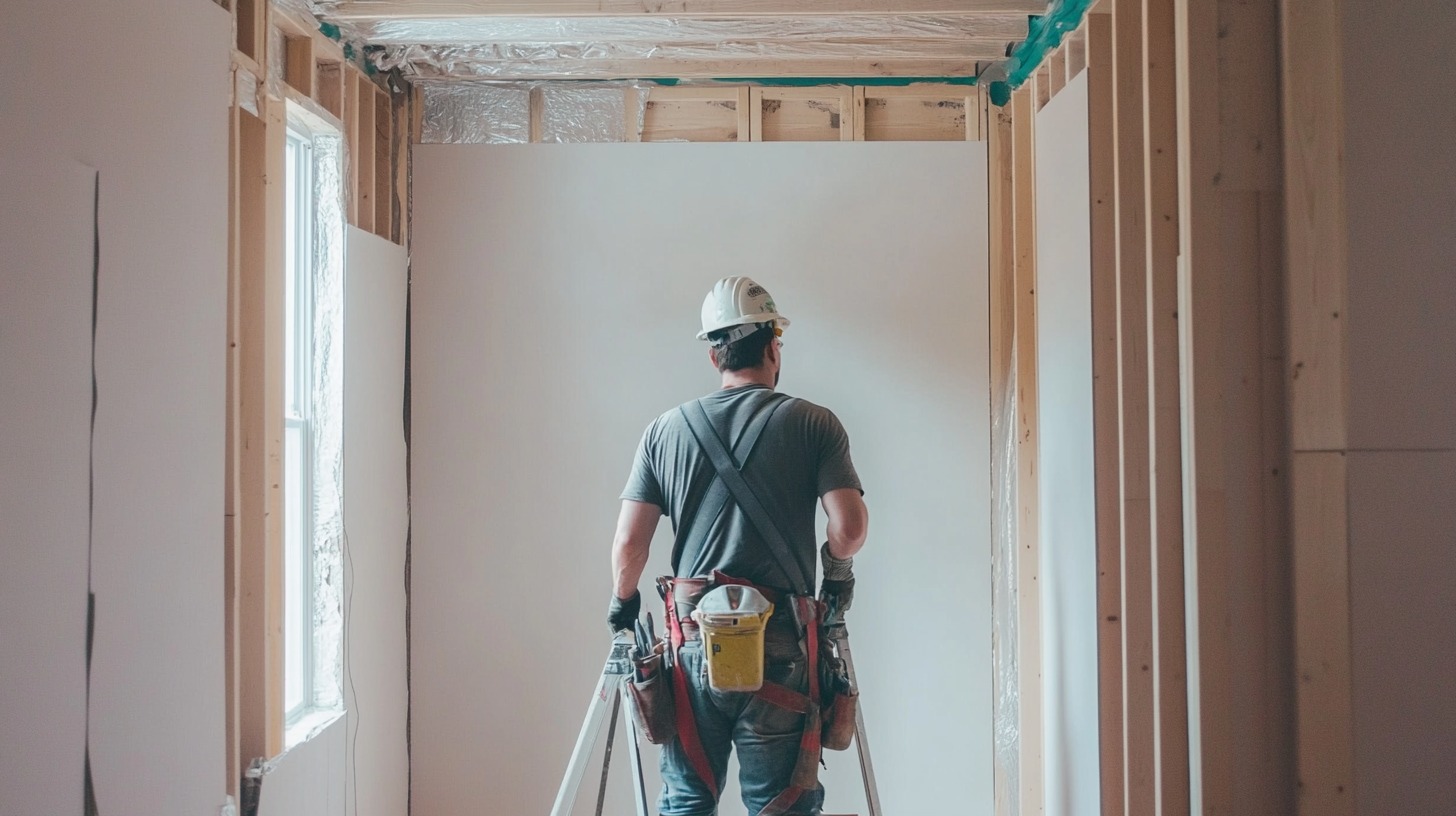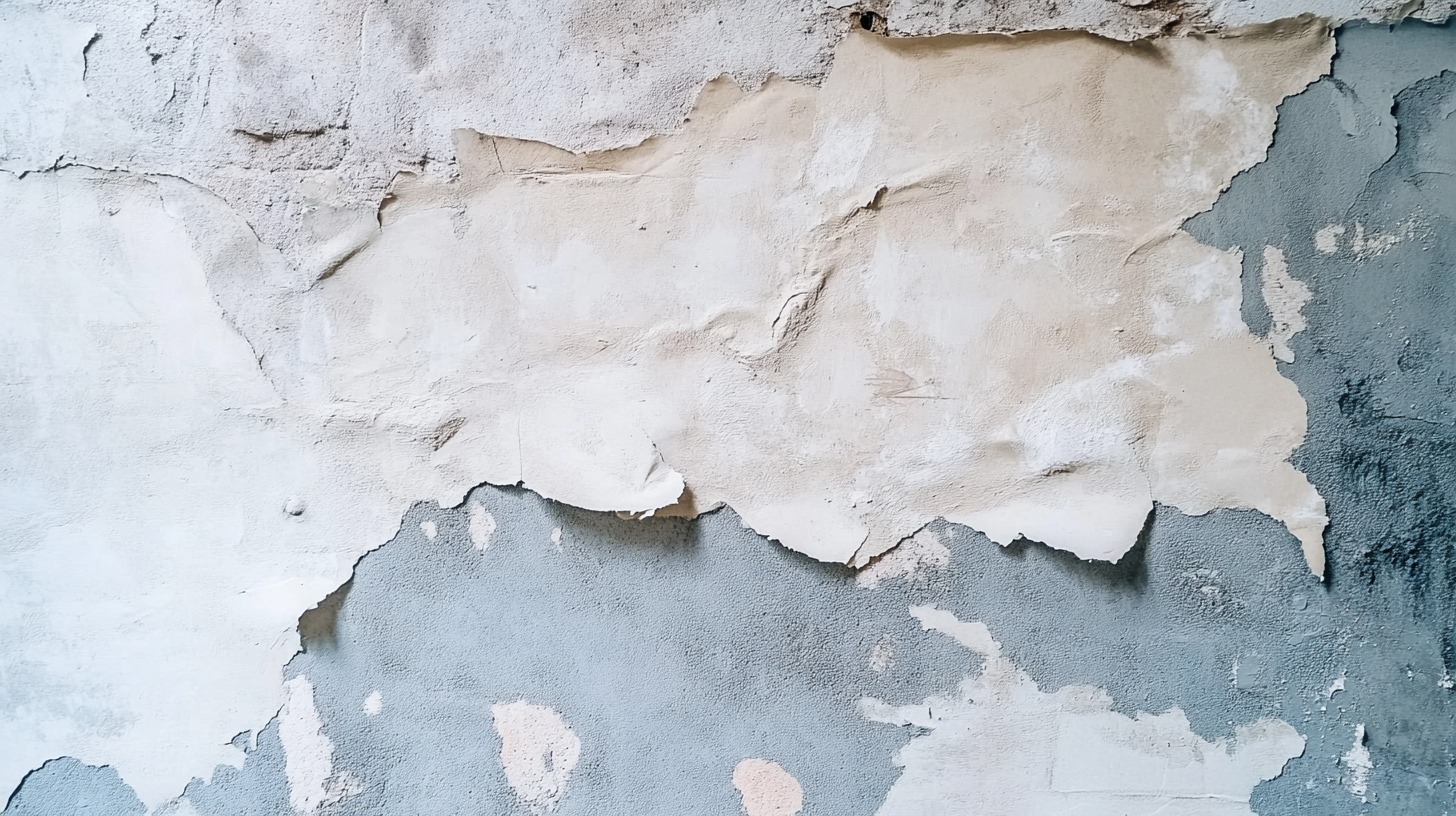Drywall repair is an essential aspect of home maintenance, ensuring that your walls and ceilings remain in top condition.
In 2024, the costs associated with drywall repair can vary widely based on several factors, making it crucial for homeowners to understand what influences these expenses.
Let us talk about them in greater detail.
Average Costs by Repair Type
First, let us address the average costs by the type of repair.
Cost to Patch Holes
Patching holes in drywall is one of the most common repair tasks, and the costs can vary based on the size of the hole.
- Small holes (6 inches): $10 – $135
- Medium to large holes (more than 6 inches): $60 – $225
These repairs often involve cutting out the damaged section, installing a new piece of drywall, and then taping, mudding, and sanding the area.
Ceiling Repair Costs
Ceiling repairs tend to be more expensive than wall repairs due to the increased difficulty and labor involved.
Small holes or cracks in the ceiling can usually be repaired for $150 to $300, depending on the size and location.
Larger cracks or extensive ceiling damage, such as sagging or water-damaged ceilings, can be much more costly.
Replacing a section of a ceiling typically ranges from $400 to $1,000 or more, depending on the extent of the damage and the materials needed.
If water damage is involved, additional costs for mold remediation and leak repairs can significantly increase the total expense.
Crack Repair Costs
Cracks in drywall are another common issue that can vary widely in repair costs.
Small hairline cracks are relatively easy to fix, often requiring just a quick application of spackle or joint compound, sanding, and a fresh coat of paint.
- Minor repairs typically cost between $100 and $250
- Larger cracks can range from $250 to $500
This might involve cutting out and replacing sections of drywall, reinforcing the area, and ensuring a smooth finish.
Water Damage Repair Costs
Water damage is one of the most severe issues that can affect drywall, often leading to significant repair costs.
- Minor water damage – $200 – $500
- Replacing entire sections – $1,000 – $3,000
Major water damage that has caused large sections of drywall to become saturated, warped, rusty or moldy can require extensive repairs.
This might include removing and replacing entire sections of drywall, addressing the source of the water, and performing mold remediation.
Total Wall Replacement Costs
In some cases, the drywall damage is so extensive that it is more cost-effective to replace the entire wall.
Total wall replacement involves removing the old drywall, installing new sheets, taping, mudding, sanding, and painting the new surface.
This type of repair is often necessary when there is widespread water damage, severe cracking, or structural issues.
The cost of total wall replacement can vary widely based on the size of the wall and the complexity of the work involved.
On average, homeowners can expect to pay between $1,000 and $3,000 for full wall replacement, with labor and material costs being the most significant contributors to the overall expense.
Factors Affecting Costs
Now let us talk about the factors that play a role in determining the repair costs.
Size of Repair Area
The size of the repair area is one of the primary factors affecting the cost of drywall repair.
Small holes or cracks, such as those caused by nails or minor impacts, are typically less expensive to fix than larger holes or extensive damage.
For instance, repairing a small hole under 6 inches might only require a bit of spackle and sanding, whereas larger holes may need:
- New drywall sections
- More extensive taping
- Finishing work
Ceiling repairs also tend to be more costly than wall repairs due to the difficulty and labor involved.
The larger and more complex the repair, the more materials and labor will be needed, driving up the overall cost.
Type of Damage
The type of damage also plays a significant role in determining the cost of drywall repair.
Common types of damage include:
- Holes
- Cracks
- Water damage
- Dents
Each type requires a different approach and level of effort to repair.
For example, a small hole can be easily patched, but water damage might necessitate replacing entire sections of drywall, addressing underlying issues like leaks, and possibly dealing with mold remediation.
The severity of the damage further influences the cost; minor cracks might only require a quick fix, while larger, structural cracks could indicate deeper issues that need professional attention, increasing the overall expense.
Material and Labor Costs
Material and labor costs are significant contributors to the overall drywall repair expense.
The cost of materials, including drywall sheets, spackle, tape, and screws, can vary depending on quality and location.
Labor costs, typically charged by the hour, are also influenced by the region; urban areas with higher living costs usually have higher labor rates.
Many contractors charge a minimum trip fee, which is the base amount for small jobs, regardless of the repair’s size.
This fee can be a significant part of the cost for minor repairs but becomes less impactful as the scope of work increases.
Location and Accessibility
The geographic location of your home can significantly affect drywall repair costs.
Homes in urban areas or regions with a higher cost of living will generally see higher repair costs due to increased labor rates and material prices. The accessibility of the damaged area can impact the cost.
Repairs in hard-to-reach places, such as high ceilings or cramped corners, often require more time and specialized equipment, increasing labor costs.
Accessibility challenges can also lead to additional charges for things like scaffolding or ladder rentals, further driving up the repair bill.
DIY vs. Hiring a Professional
Of course, the costs will be significantly impacted on your decision between doing it yourself or hiring a professional.
DIY
For homeowners with a bit of skill and the right tools, DIY drywall repairs can be a cost-effective option for small holes and minor cracks.
DIY kits are available at most hardware stores and typically include everything needed to patch small areas, such as spackle, a putty knife, and sandpaper.
The cost of these kits ranges from $10 to $50, depending on the brand and contents. However, while DIY repairs can save money, they are only recommended for straightforward issues.
Attempting to fix larger holes, water damage, or extensive cracks without proper expertise can lead to further problems and ultimately cost more to repair.
Hiring a Professional
Hiring a professional drywall contractor is often the best option for more extensive repairs, such as large holes, significant cracks, or water damage.
Professionals have the experience, tools, and materials needed to ensure the repair is done correctly and efficiently.
While the cost of hiring a professional is higher, ranging from $200 to $1,500 or more depending on the job’s complexity, the quality of the work and the peace of mind it provides are often worth the investment.
When hiring a contractor, it’s essential to get multiple quotes, check references, and ensure they have the necessary licenses and insurance to perform the work.
Ways to Save Money in the Process
Finally, let us show you a couple of ways you can save on drywall repair.
Preventative Measures
One of the best ways to save on drywall repair costs is through preventative maintenance.
Regularly inspecting your walls and ceilings for minor damage and addressing it promptly can prevent more extensive and costly repairs down the line.
For example, fixing small cracks or holes as soon as they appear can stop them from expanding and requiring more labor-intensive repairs.
Addressing potential sources of water damage, such as leaky roofs or plumbing, can prevent costly water damage to your drywall.
DIY for Minor Repairs
For minor repairs, such as small holes or hairline cracks, taking a DIY approach can significantly reduce costs.
As mentioned earlier, DIY kits are inexpensive and readily available, making it easy for homeowners to handle these small jobs themselves.
With a bit of patience and attention to detail, DIY repairs can be just as effective as professional ones, saving you the cost of labor.
Bundling Repairs
If your home requires multiple drywall repairs, bundling them together can be a cost-effective strategy.
Contractors often offer discounts for larger jobs, so having them address all the issues at once can reduce the overall cost per repair.
The approach can minimize disruption to your home, as all the work is completed in one go rather than over several visits.
Get Multiple Quotes
Finally, one of the most effective ways to save on drywall repair costs is to get multiple quotes from different contractors.
Prices can vary widely between contractors, even for the same job, so shopping around and comparing quotes can help you find the best deal.
When reviewing quotes, make sure to consider not just the price but also the contractor’s experience, reputation, and the quality of materials they plan to use.
The Bottom Line
Understanding the factors that influence drywall repair costs in 2024 can help homeowners manage these expenses effectively.
By considering the size and type of damage, material and labor costs, and whether to DIY or hire a professional, you can make informed decisions that balance quality and cost.
Taking preventative measures and seeking multiple quotes are key strategies for keeping drywall repair costs manageable.

